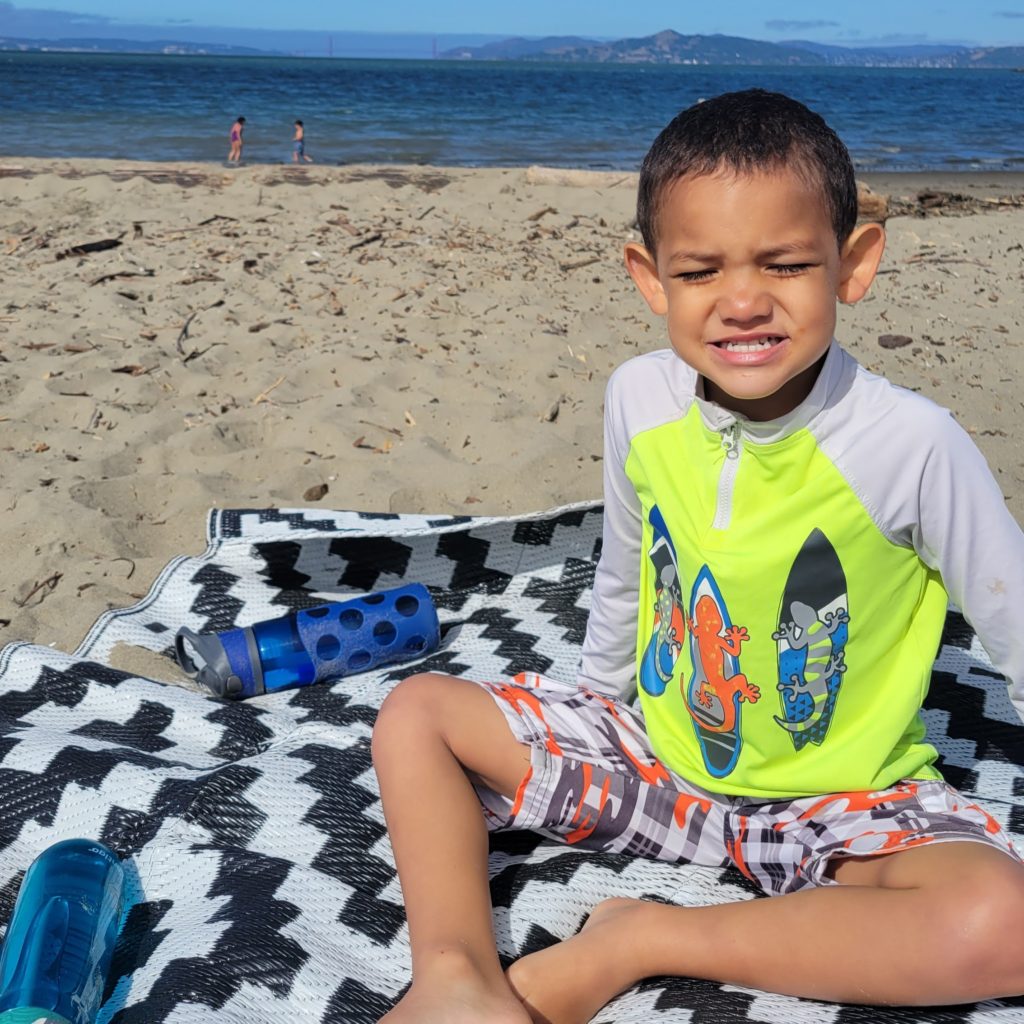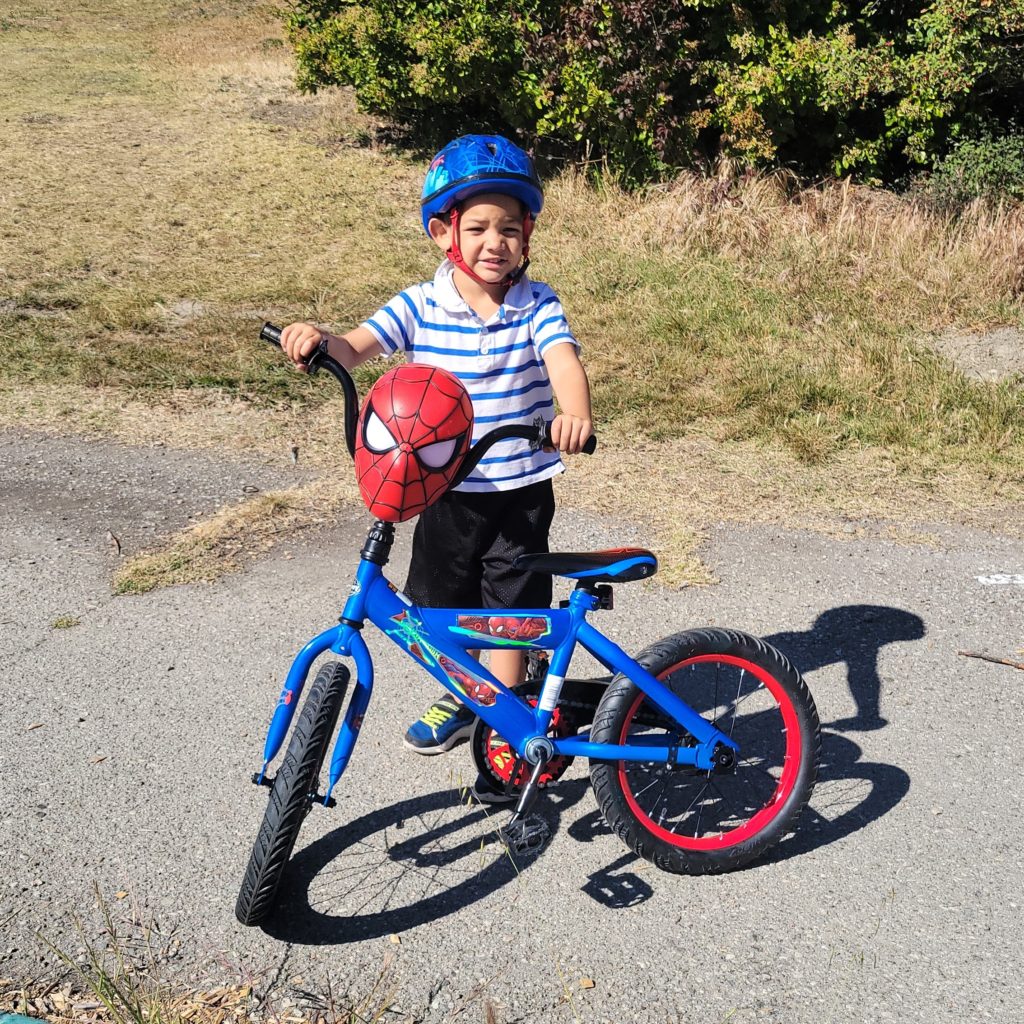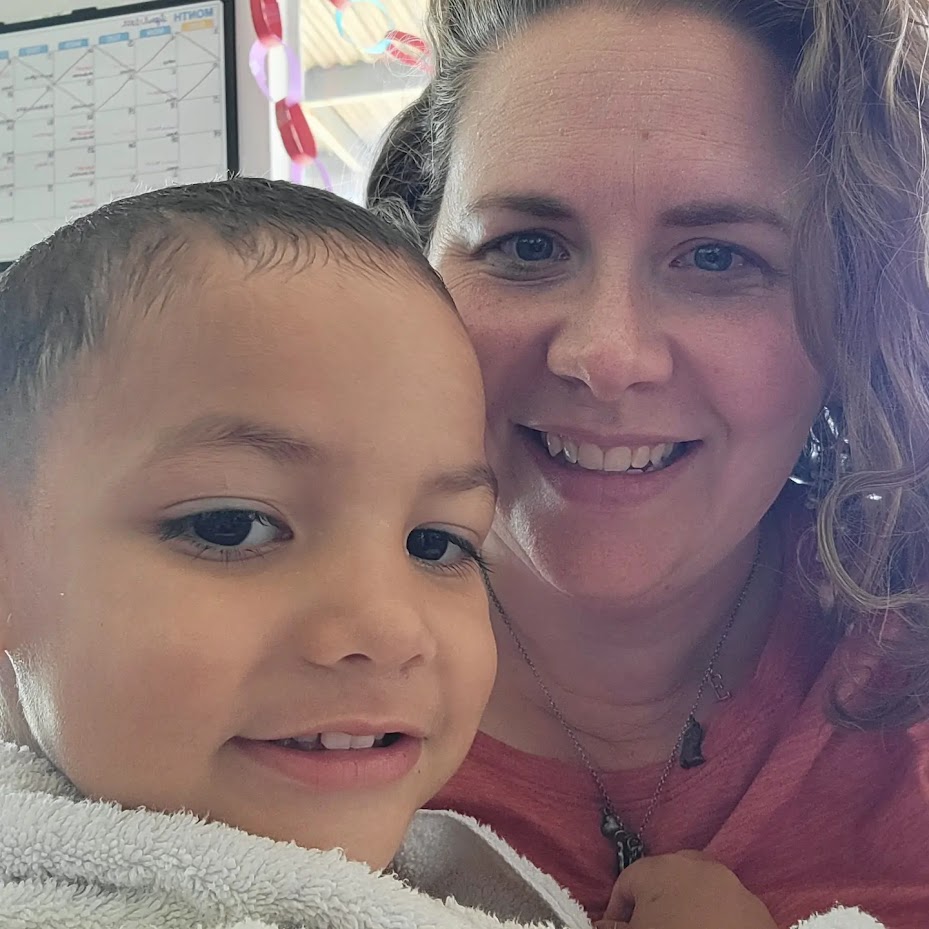Every child comes with unique joys and challenges, and my three old has a particular challenge with dysregulation. I understand that the majority response might be “All three year olds have challenges with dysregulation,” which I would fully agree with. There are valid reasons many parents are trepidatious about the toddler years. However, I had two three year olds before I had this one, and this one is a special kind of challenge. His tantrums can be 45 minutes to an hour long of screaming at the top of his lungs, and there are many times in which nothing I do makes any difference. We have some methods to help calm him, but none of these are universally successful.
His tantrums had quelled for about 8 months, and I thought we were doing really well. Then Grandpa passed away, and looking back it seems that the only way for him to process his grief was a return to intense tantrums. He would tell me almost every day, “I am sad Grandpa died” or “I miss Grandpa.” Grandpa had been Fin’s buddy and had lived with us for a majority of Fin’s life. I can only imagine the way a three year old processes loss, but Fin’s manifested in uncontrollable tantrums.
Even though it was unlikely that I could have helped him eradicate the tantrums entirely, there were certainly things I could have done to make them shorter, less intense and easier to handle, and these all required me to regulate myself before reaching out to help him. During the hardest days, it was impossible to know what would trigger a tantrum. One day, he started screaming because Ana Lia opened the curtains. He decided that he had wanted to open the curtains. Even though he had not told anyone that, he screamed for almost an hour because his sister had done it first. There were times that I handled these well and other times that I ended up in tears myself.
However, there were also events that would predictably lead to a tantrum. Fin was fully immersed in the “I can do it myself” stage, and any attempt to rush him or take over the task he was trying to do would inevitably lead to a screaming fit. Most days I would remember to have him get his clothes and shoes out about 30 minutes before we needed to leave so that he could spend the remaining time getting dressed while the other kids and I were doing everything else. As soon as he got dressed, I would let him go out to the van and start buckling his car seat so that he was finished by the time I got to the van. This allowed him plenty of time to complete the tasks he wanted to do independently.

If I didn’t set him up for success by reminding him early that to start getting ready or sending him out early to buckle himself in, I was often impatient that it took him so long to accomplish these tasks. In those moments – the ones where I gave in to impatience and tried to do the task for him – we suffered the strongest and longest tantrums. Frequently, his levels of dysregulation were a direct reflection of my own. If we were trying to get from one place to another quickly, I could explain to him that I needed to buckle his car seat this one time so that we could pick up Daddy from the train station. Combining my calm with a direct explanation could help us avoid a meltdown. When I did not take the time to explain the situation and instead simply buckled him while he was trying to do it, he might scream for hours, stuck in a cycle of fixation and rage.
I eventually learned to head off as many of these tantrums as I could, but there were always days when I unnecessarily got in a hurry. It rarely took him more than five minutes to buckle his car seat, and a quick zoom out of life reminded me that even if it made us five minutes late (or five minutes later) that it would be okay. It was worth keeping the peace in our home, and it was an important lesson in patience for me. Not everything needed to be immediately or on my timeline. In many cases, I could bend my timeline to match that of my very high needs three year old.
The other way that would often help us avoid the tantrum was for me to take time to hold him on the couch or lay with him in the bed. Again, it required my patience. I had to rearrange the schedule for that morning or sometimes the entire day. I had to find a different time to work or to do school with the older kids. I hate schedule changes, and this would often lead to me getting frustrated. He could sense my frustration, leading to a rise in his emotions, which he had not yet learned to regulate. In so many ways, my impatience led to uncontrollable emotional outbursts that impacted our entire family.

After the tantrum began, I felt hopeless especially when I could look back and see what my options had been for preventing it. I tried all sorts of interventions and strategies during the tantrums, and most of the time, nothing worked. We usually had to ride the wave until he exhausted himself to sleep. Thankfully, Afa is much better at handling the intense episodes when he is home.
One Sunday, I went to get Fin from Children’s Ministry class, and he was in the middle of a tantrum. The teacher said that another boy had a toy that Fin wanted, and Fin was angry that the other boy refused to share, which was that child’s prerogative. He didn’t have to share with Fin. When I communicated that to Fin, the tantrum increased significantly in volume. I thanked the teachers for serving the children, picked up my screaming child, and walked out into the lobby. I offered to sit and hold him, but he didn’t want to do that. He didn’t want to hide under the table or the curtains or any of the other places he generally likes to hide. The only thing that he wanted was to play with that toy (fixation). I was not willing to get the toy for him because he also needed to learn that the world does not bend to his demands.

My plan had been to carry him to the van and wrestle him into his carseat so that he could get a good nap. Thankfully Afa was there to help me see how patience can also be effective at cutting the tantrums short. We still had to carry him to the van screaming, but Afa would not start the van until Fin stopped crying. He was patient enough to help him work through the big emotions and practice self-regulation, instead of just falling asleep, which is what I would usually wait for.
A friend helped me see that I had to find victories in any place that I could. I kept a log of his tantrums so that I could see what triggered them, how intense they were, and how long they lasted. I then learned to celebrate when we had a day with fewer tantrums or a day when they were all less than 30 minutes. Setting an expectation that this very high needs child would have zero tantrums set us all up for failure. So I had to manage my expectations, regulate my own emotions, and develop patience beyond measure for us to get through this particularly challenging stage.